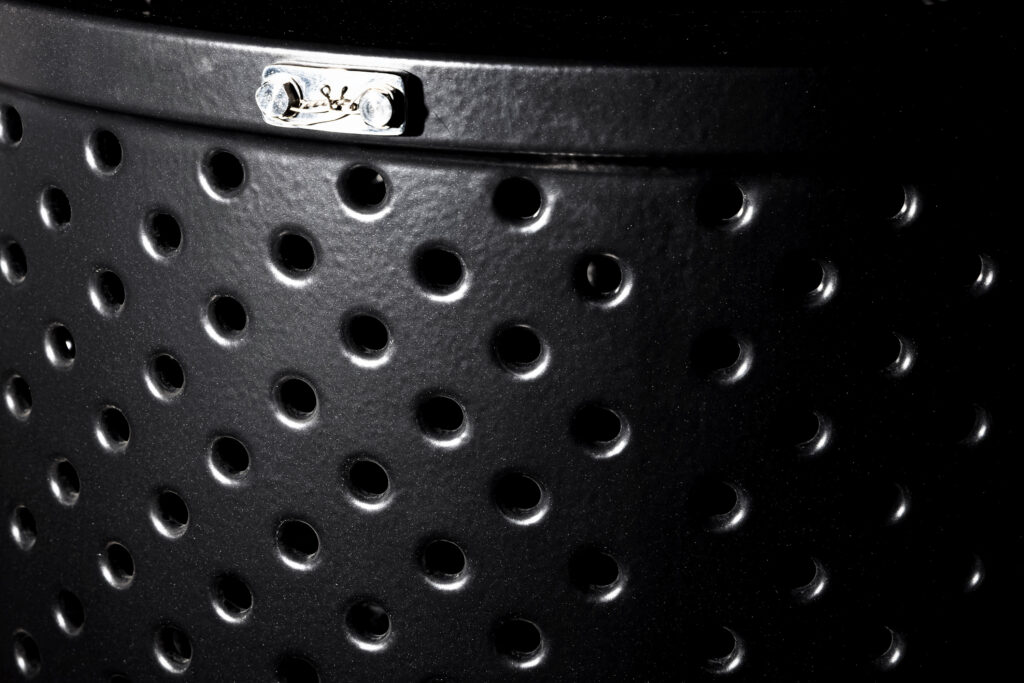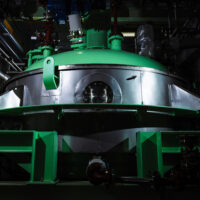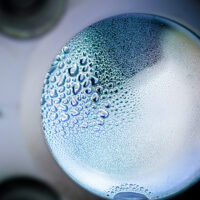
Making displays more vivid and longer-lasting / The story behind Manac’s exemplary halogenation process patents
Organic electroluminescence (EL) has become widely adopted, including in televisions, smartphones, video game consoles, and in-vehicle displays, as a new display technology replacing liquid crystal displays (LCD).
Manac holds multiple manufacturing process patents related to halogenation useful for electronic material fields, including organic electroluminescence. The effective application of these processes can be expected to improve display luminosity and durability.
We sat with Ms. Takahashi of the IP & Research Planning Department to learn about the initiatives for process patents related to such aromatic halogenation being implemented at Manac.
■ What you can learn from this article ✔ Manac uses halogenation technology in the organic EL field to improve display brightness and durability. ✔ The criteria for patenting involve careful evaluation of marketability and the risks of public disclosure. ✔ Aromatic halogenation technology is expected to be applied to the manufacturing of complex compounds like pharmaceuticals. ■ Recommended Articles ・ Manufacturing patents that enable high purity / Manac’s proud aromatic halogenation reaction technology ・ The story behind MANAC Shanghai’s first woman president in a chemical industry noticeably devoid of key women players
contents
The story behind patenting manufacturing technologies
As of June 2021, Manac holds 51 patents in Japan and 49 patents outside Japan. The majority of these patents are not for “things” but rather for process patents related to the manufacture of chemical compounds.
These include patents related to aromatic halogenation, one of Manac’s most robust technologies.
With an eye on halogen compounds for their potential use as manufacturing intermediates in such components as the luminescence materials and photoconductors used in organic EL displays, Manac began investigating around 2008, and commenced development around 2010.
Organic EL displays have recently become ubiquitous across electronic devices, which now compete in terms of product quality based on the level of display luminescence and durability. Clients who request the production of materials from Manac indicate rigorous standards for luminosity and durability, for which solutions leveraging halogenation technologies, Manac’s core technologies, have been provided.
As organic EL technologies have become widely adopted, device users are increasingly demanding higher standards for displays. Device manufacturers are in turn growing more stringent toward material standards to meet the demands of users. Manac has responded to each of these changes in demand from device manufacturers by fine-tuning existing manufacturing methods and developing new methods as necessary.

Marketability and technology promotion as criteria for patenting
Regardless of the outstanding technologies that Manac may come to hold, not all such technologies are submitted to be patented. Decisions are made about which technologies to patent and which to not patent and instead add to Manac’s library of internal expertise.
The following two points serve as the criteria behind whether applications for manufacturing methods developed by Manac are submitted for patenting.
The first criteria involves whether or not the technology would contribute to value or marketability for the client.
As an example, suppose there is a manufacturing method that Manac has developed that can raise the purity of compounds, albeit at a certain increase in cost over traditional methods. Because such purity is a crucial element in the field of electronic materials, technologies that can raise purity can be said to be directly related to value for clients. However, if many clients do not place importance on purity, increases in costs can be a disadvantage.
As Ms. Takahashi explains, “Even if we were to develop a new manufacturing process related to halogenation, if it doesn’t lead to value or marketability for the client, we will decide internally not to proceed with patenting the process.”
The second criteria involves the question, “Would there be any issues for us if we publicly released the technology, making it available for other companies to see?” Patenting entails the public release of the crucial aspects of our company’s technologies, making them widely available for viewing.
With the type of process patents that Manac holds, there is a risk of chemical manufacturers with a sufficient level of technology and facilities being able to find loopholes in the technology and circumvent the scope of the patent.
“The benefits of patenting processes must far outweigh the risks involved with other companies learning of our processes as a result of publicly releasing them,” Ms. Takahashi points out as she explains.
“In terms of specific benefits from patenting, firstly, we gain legal protections. Other than that, we can better limit competition and promote our technology to clients. We decide whether or not to patent our newly developed technologies by clarifying the advantages and disadvantages and weighing them out.”
Manac’s non-patented technologies
The technologies that have been publicly released as patents by Manac have passed internal screening and account for only a portion of the technologies built up over many years.
As Ms. Takahashi explains, “The technologies that we have patented are only the tip of the iceberg in terms of the technologies we have developed. Important technologies are not limited to the ones we were able to patent, but rather include the expertise of our developers, who have an abundance of experience in development. I would like to dig further into the ideas inside the minds of our developers going forward. It is my hope that this will be useful in building relationships of trust with clients so that they can consult with us with the confidence that Manac can likely provide solutions.”
Aromatic halogenation technology expected to be leveraged for complex compound structures in pharmaceuticals and other fields
The application of aromatic halogenation, Manac’s core technology with a strong track record thus far, is not limited to the field of electronic materials. In such fields as pharmaceuticals, for example, this technology can be effective for compounds with complex structures that are difficult to directly form as final reactant products.
Because pharmaceuticals are taken up into the body, it is critical to ensure that only the required compounds are included, and that no other impurities are present. However, in order to increase the purity of compounds through traditional manufacturing methods, multiple rounds of purification are required, negatively impacting productivity.
Please see the article at the following link about a real example of Manac solving a pharmaceutical manufacturing company’s challenge in relation to compound purity.
The manufacturing processes and technologies related to aromatic halogenation that Manac has cultivated have the potential to solve the challenges of fields that require compounds with complex structures, such as the pharmaceuticals fields. The next article will introduce details about three of the aromatic halogenation process patents held by Manac in the electronic materials field.













